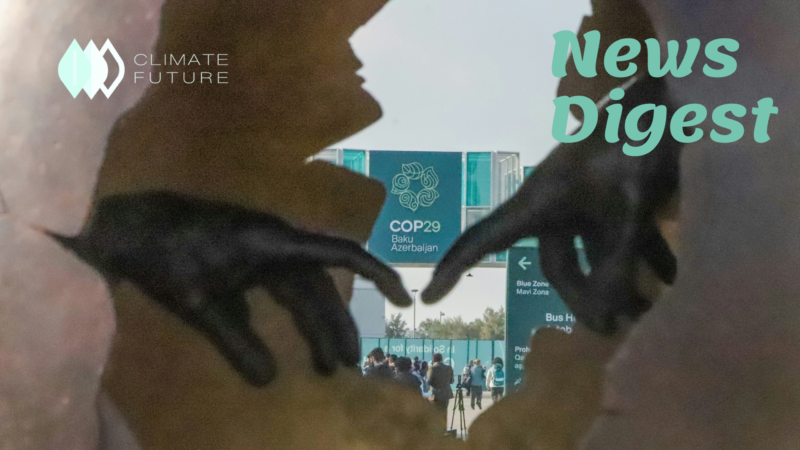Wind and solar are ‘fastest-growing electricity sources in history’

Image: Erhan Çoban, CC BY-SA 3.0, via Unsplash
The newest analysis from Ember indicates that the expansion of renewable energy is expected to outpace the demand for fossil fuels, pointing to a peak in fossil fuel-generated electricity output and emissions in 2023. Despite a sharp decline in hydropower, renewable energy sources provided a record 30% of the world’s electricity in 2023. Without solar and wind, the amount of energy produced using fossil fuels would have increased by 22%, adding almost 4 billion tonnes of CO2 emissions. This would be almost half of power sector emissions and be in line with the 1.5°C objective set by the Paris Agreement, even though clean electricity development must quicken to achieve the worldwide aim of tripling renewables by 2030. Wind energy continued to remain at 7.8% of the world’s energy mix, but solar power increased quickly to 5.5%. Compared to other energy sources, wind and solar have expanded the fastest, reaching notable production levels in a matter of years. However, in 2023, wind power generation marginally decreased as a result of poor wind conditions and increased project delays. The demand for electricity reached a record high, largely due to the major contributions of other electrified sectors and electric vehicles. According to Ember’s estimates, clean power will continue to increase quickly, with a potential 2% reduction in fossil fuel generation by 2024. The need to triple renewable energy capacity by 2030 was underlined at the COP28 meeting in order to significantly reduce the use of fossil fuels and emissions from the power sector.
Accelerating extinction rate triggers domino effect of biodiversity loss

© Wikimedia/Birdphotos.com
Before May 22, International Day for Biological Diversity, the UNU’s Interconnected Disaster Risks report emphasizes the startling loss of biodiversity. Rendering approximately 350 vulnerable species, including the severely endangered dusky gopher frog, is the gopher tortoise, an important ecosystem engineer on the coastal plains of the southern United States. Approximately 400 vertebrate species have disappeared in the last century due to human activities such as pollution, invading species, climate change, and changes in land use. As a result, there are now related “risk tipping points” where ecological breakdowns could take place. In the paper, the impact of the sea otter’s decrease on Pacific kelp forests and countless dependent species is used as an example of the domino effect of extinctions. The Biodiversity Plan, which was approved in 2022, intends to mitigate this catastrophe by restoring native species populations and tenfold reducing the rate of extinction by 2050. The emphasis must change from protecting individual species to protecting entire ecosystems. In light of our shared destiny with the natural world, the necessity to take immediate action to preserve ecosystem resilience and incorporate the environment into our culture.
How cities around the world are finding ways to beat extreme heat

Heatwaves are growing increasingly frequent and harmful, particularly in urban areas. The heat island effect causes cities to become hotter than their surroundings, which can be fatal for residents in low-income areas. Researchers have discovered that towns with more trees might experience noticeably cooler temperatures. To battle heat, several cities worldwide are constructing green spaces and planting trees. Increasing airflow is another method of keeping cities cooler. In certain parts of the world, wind catchers are a classic architectural element that is used to help direct wind through urban areas. Furthermore, adding wind corridors to new construction can aid in the natural cooling of structures. Cities can also be kept cool by water features. Large pools of water with tree shade, as well as water features like fountains and misting stations, can all contribute to a cooler environment. A river rehabilitation project in Seoul, South Korea, lowered the city’s temperature and lessened flooding. One easy and efficient method of lowering interior temperatures is to paint white on rooftops. Around the world, numerous communities have put in place cool roof initiatives that offer cash incentives or let residents paint their own roofs. A further strategy to lessen the heat island effect is to use reflective roadways. It is possible to apply specific reflective coatings on roadways to lighten their color and reduce heat absorption. One city that has put into practice a significant cool pavement initiative is Phoenix, Arizona. In conclusion, several cities are bringing back old architectural methods that encourage natural ventilation.
Clean cooking: What new global pledge means for climate, nature and gender goals

Image: Shelby Murphy Figueroa, CC BY-SA 3.0, via Unsplash
In sub-Saharan Africa, where a large number of people still cook over open flames, a clean cooking summit was arranged to discuss ways to increase access to clean cooking. Millions of early deaths occur annually as a result of this lack of access to clean cooking, primarily among women and children. Governments and businesses contributed $2.2 billion to the summit to support clean cooking technologies. Improved biomass stoves, electric stoves, LPG stoves, biodigesters, ethanol stoves, and gas stoves are a few of the clean cooking technology solutions available. LPG stoves are viewed by the International Energy Agency (IEA) as a key component of the answer, however, critics contend that this forces African nations to rely more heavily on fossil fuels. Some promote the use of solar-powered electric stoves and other green energy sources. Another significant obstacle is funding initiatives related to clean cooking. Although some money was raised at the summit, more is still required. Carbon offsets are one suggested remedy; wealthy nations fund clean cookstove initiatives in Africa and then claim the reduction in emissions. There are worries that many carbon offset programs for cookstoves may not be successful in lowering emissions.
References
https://www.eco-business.com/news/wind-and-solar-are-fastest-growing-electricity-sources-in-history
https://news.un.org/en/story/2024/05/1150056
https://www.eco-business.com/news/how-cities-around-the-world-are-finding-ways-to-beat-extreme-heat



